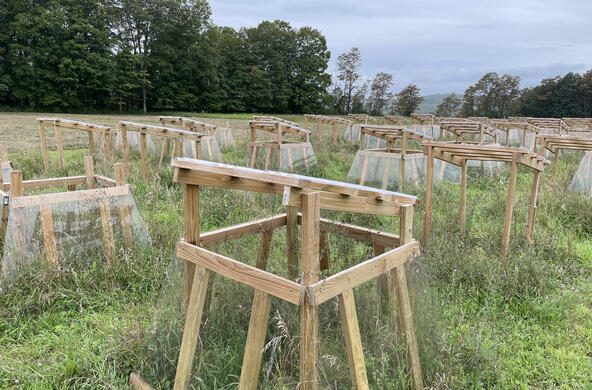A few years ago, in her wonderful book, The Seed Underground, Janisse Ray described the genetic homogenization of food crops. Three species (wheat, corn and rice) account for 87 percent of all grain production worldwide, and in the United States, nine species of wheat constitute half of that grown. This genetic selection for high-yielding varieties, sometimes even genetically engineered varieties, accounts for the high yield of American agriculture.
This genetic homogenation of crops ignores some basic evolutionary principles about the advantages of diversity should environmental conditions change. The failure of the potato crop in Ireland in 1846 was certainly exacerbated by the fact that 90 percent of the potatoes grown were of one variety—Lumper—that was particularly susceptible to a new blight. Despite the current success of wheat, corn and soybeans in the United States, our monocultures are certainly vulnerable to a similar failure.
We should also be worried about the loss of diversity of crops planted across the landscape. Whereas in the mid-1900s, family farms typically produced a diversity of crops on various fields, accompanied by a variety of farm animals, the typical farm today focuses on a single crop (and crop variety) planted on vast areas of the landscape. In a recent analysis, Crossley and his colleagues found that the spatial concentration of crops in the U.S. has increased 15-fold. In 1940, 88 percent of rural counties grew more than 10 crops; today only 2 percent do so. Especially during the last 20 years, industrial agriculture has homogenized not only the genetics of what is grown but also the display of those crops across the landscape. We have lost the hedgerows, small woodlots, and wetlands that add to the biodiversity of agriculture landscapes, often facilitating pest control. Farms are no longer using cropland diversity to hedge their bets against pests, pathogens and drought.
As we grapple with the onslaught of COVID-19, we should come to realize how large congregations of a single species—in this case Homo sapiens—are susceptible to the transmission of a newly evolved pathogen. Similarly in agriculture, we maximize the vulnerability of our food system by planting a narrow diversity of crops on a vast areas of the landscape, rather than interspersing crop varieties in individual farms.
We’ve got an agricultural system that can feed the world, but one which will let the world down with a thump if it fails in response to a COVID-type pandemic of plant pathogens.
References
Aguilar, J., G.G. Gramig, J.R. Hendrickson, D.W. Archer, F. Forcella and M.A. Liebig. 2015. Crop species diversity changes in the United States: 1978-2012. Plos One 10: doi: 10.1371/journal.pone.0136580.
Crossley, M.S., K.D. Burke, S.D. Schoville, and V.C. Radeloff. 2020. Recent collapse of crop belts and declining diversity of US agriculture since 1840. Global Change Biology doi: 10.1111/gcb.15396
Ray, Janisse. 2012. The Seed Underground: A growing revolution to save food. Chelsea Green Publishing, White River Junction, Vermont.
Root, R.B. 1973. Organization of a plant-arthropod association in simple and diverse Habitats- Fauna of collards (Brassica oleracea). Ecological Monographs 43: 95-120







